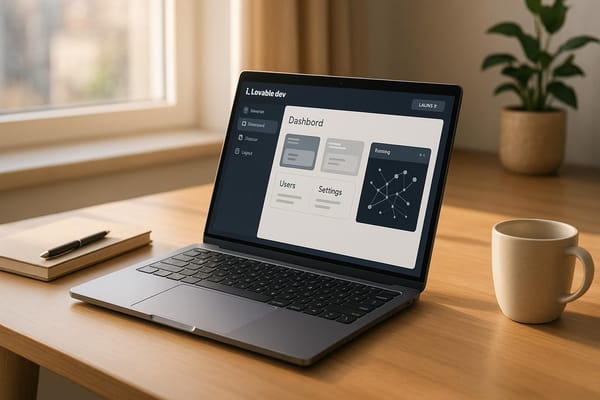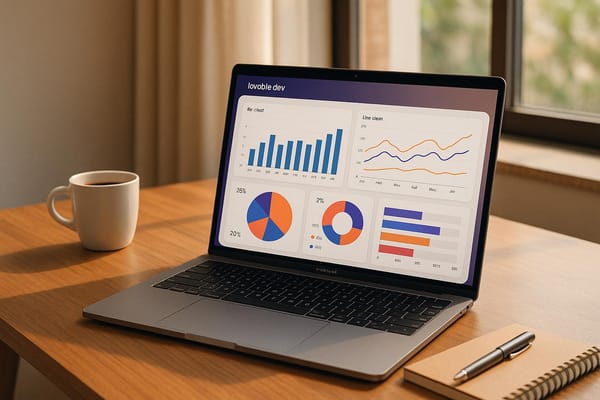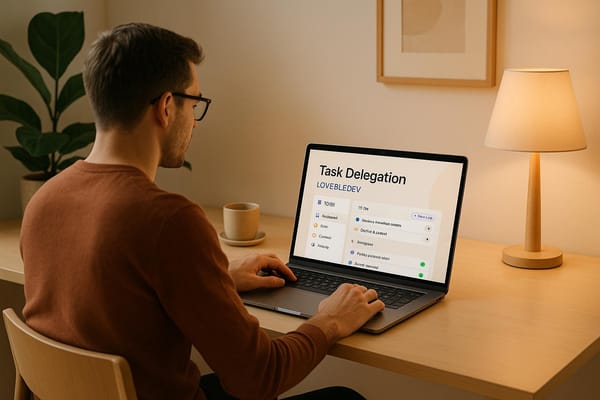How to Add Subtle Animations in Loveable.dev Apps
Learn how to incorporate subtle animations in your apps for enhanced user engagement and accessibility with practical tips and community resources.
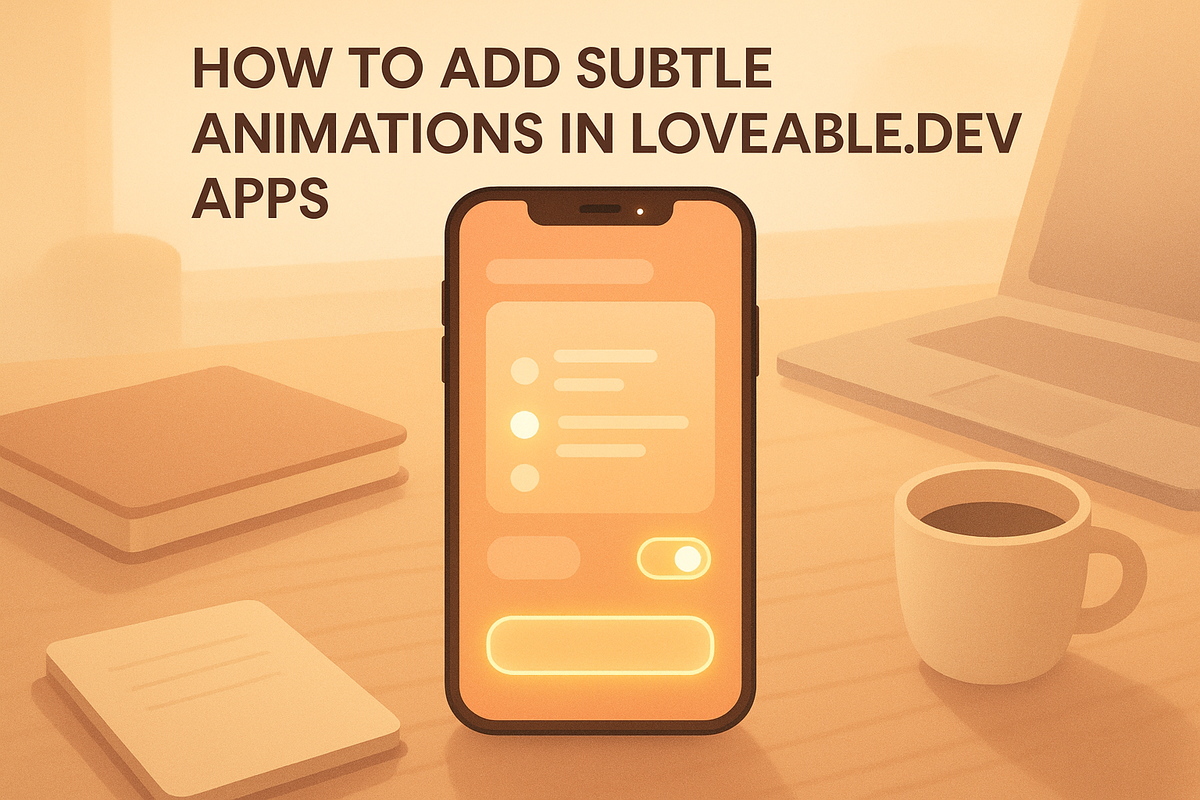
Subtle animations can make your Loveable.dev apps more engaging and easier to use without overwhelming users. Here’s how you can start:
- Built-In Tools: Use Loveable.dev’s animation templates for quick, smooth interactions.
- Key Tips: Keep animations simple, optimize for mobile, and ensure accessibility for all users.
- Timing Recommendations:
- Micro-interactions: 200–300 ms (e.g., button clicks).
- Page transitions: 300–400 ms (e.g., screen changes).
- Complex animations: 400–800 ms (e.g., loading states).
- Accessibility: Respect reduced motion settings and provide options to control or disable animations.
For more ideas, explore examples and resources shared by the Loveable.dev community on loveableapps.ai. Collaborate with other developers to refine your skills and create user-friendly animations.
The Subtle Art of Micro Animations
Animation Tools in Loveable.dev
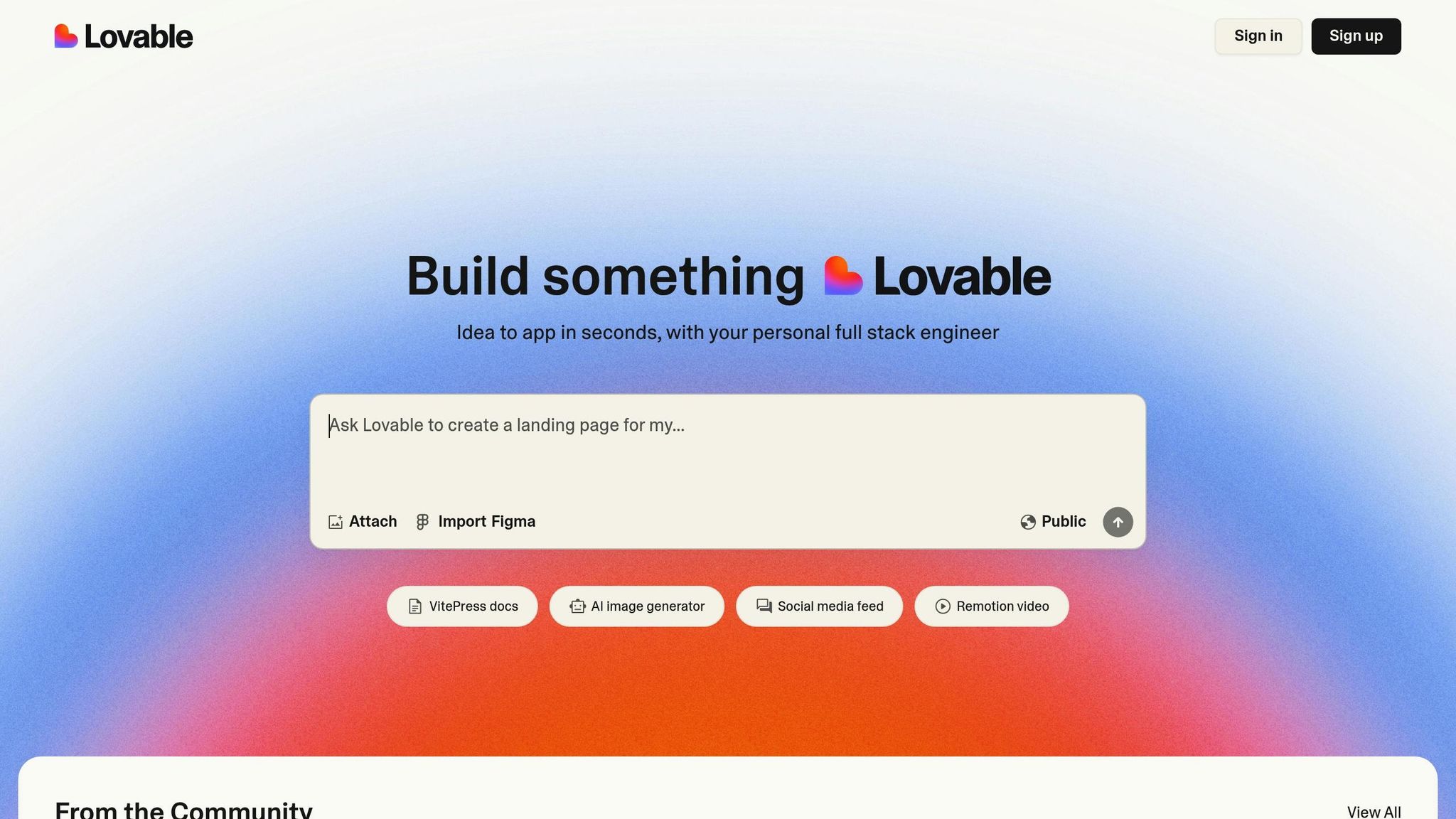
Loveable.dev makes it easy to add animations that improve user experience. With built-in tools, you can create smooth, intuitive interactions without adding complexity to your development process. Here's how these tools can simplify your animation workflow.
Built-In Animation Tools
The platform includes animation prompt templates that help you add visual cues to guide users through your app. These templates save time and keep your app engaging and responsive.
Tips for Effective Animation Design
When designing animations for your Loveable.dev apps, follow these key guidelines:
- Clear Feedback: Use animations to provide feedback that enhances the user experience without confusion.
- Quick Setup: Leverage built-in templates to implement common animation patterns efficiently.
- Mobile Optimization: Test your animations on mobile devices to ensure they perform smoothly and are accessible.
- Keep It Simple: Avoid overly complex animations that could slow down your app or distract users from its main features.
How to Add Animations in Loveable.dev
Adding subtle animations can make your app more engaging and visually appealing. While the official landing page focuses on core features like image uploads, it doesn’t provide much detail on animations.
If you’re a developer looking to experiment with animations, the community has you covered. Check out user-shared tips and advice on loveableapps.ai to fine-tune your animation techniques and tackle common challenges. From there, you can dive into specific methods to implement and optimize animations in your app.
Tips for Better Animations
Creating effective animations requires careful attention to detail, ensuring they perform well and are accessible to all users.
Setting Animation Speed and Flow
The right animation speed can make interactions feel smooth and natural. Use these timing recommendations to guide your choices:
| Animation Type | Recommended Duration | Best Use Case |
|---|---|---|
| Micro-interactions | 200–300 ms | Button clicks and toggles |
| Page transitions | 300–400 ms | Screen changes and modal windows |
| Complex animations | 400–800 ms | Loading states and success messages |
Making Animations Work on Mobile
Mobile devices come with unique challenges, like varying performance levels and screen sizes. Keep these tips in mind:
- Optimize performance: Use hardware-accelerated properties like
transformandopacityto ensure smooth rendering. - Touch responsiveness: Design animations to react immediately to touch inputs for a seamless user experience.
- Adapt to screens: Test animations across different devices, sizes, and orientations to maintain consistency and performance.
Making Animations Accessible
Animations should enhance the experience for everyone, including users with specific needs. Here's how to make them more inclusive:
- Honor user preferences: Detect system settings for reduced motion and provide static alternatives when motion reduction is enabled.
- Provide control options: Allow users to adjust or turn off animations as needed.
- Keep it clear: Use short animations with defined start and end points. Avoid endless loops or overly intense effects that might cause discomfort.
Community Resources for Animations
Once you've mastered built-in tools and design tips, tapping into community resources can take your animation skills to the next level. The Loveable.dev community offers a wealth of resources tailored for developers looking to refine their animation expertise.
Animation Examples on Loveableapps.ai
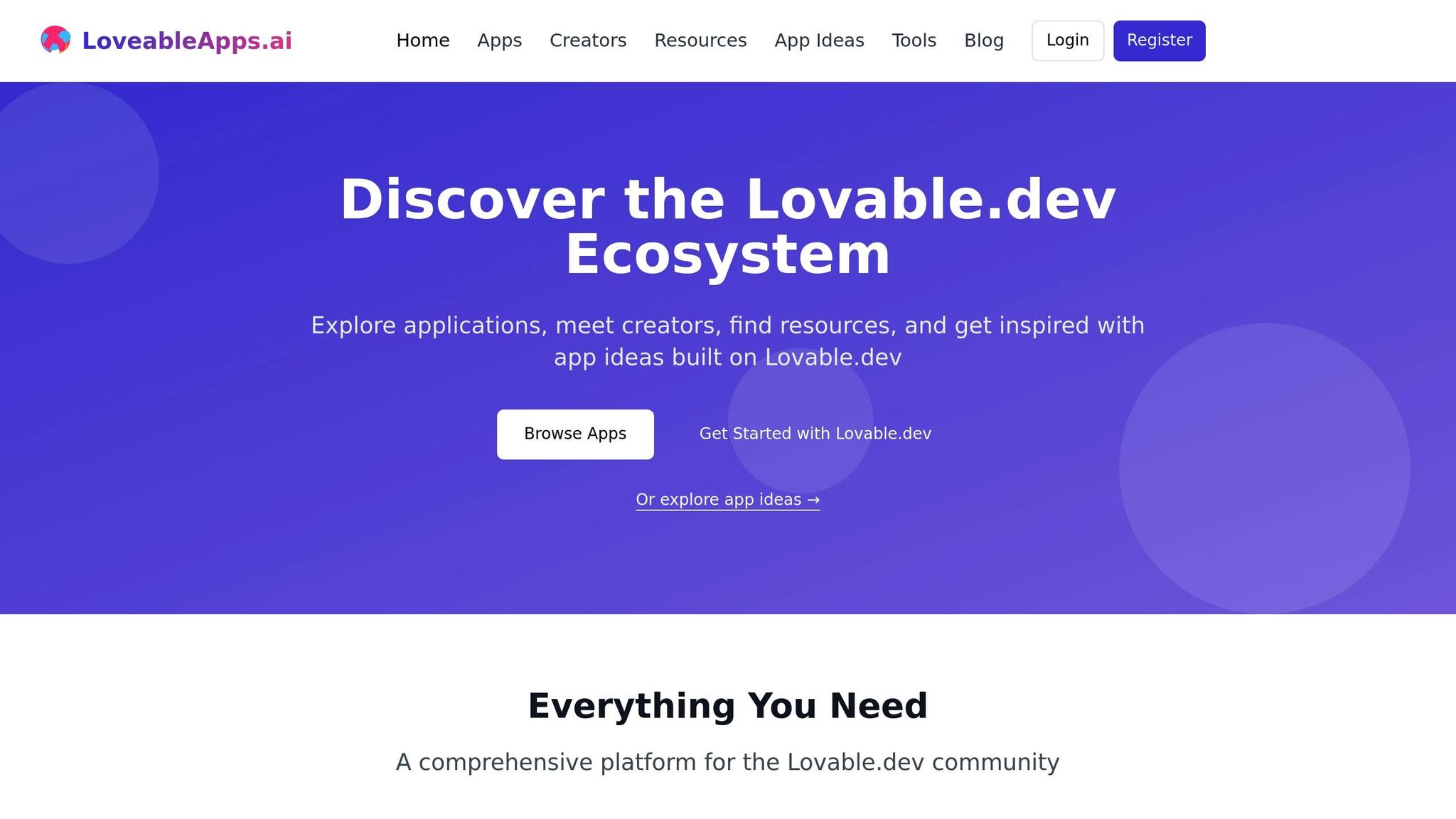
Loveableapps.ai is a treasure trove of animation examples, providing both inspiration and practical guidance. The App Directory highlights subtle animations across various categories:
| Category | Animation Types | Common Use Cases |
|---|---|---|
| Productivity Apps | Micro-transitions | Task completion, list sorting |
| AI Tools | Loading states | Process visualization, feedback loops |
| Design Tools | Interactive elements | Canvas interactions, tool switching |
| Education Apps | Progress indicators | Course completion, achievement unlocks |
To make the most of these examples:
- Filter animations based on complexity and performance requirements.
- Consider accessibility to ensure inclusivity.
- Dive into featured projects to study their implementation.
Collaborating with fellow developers on these examples can provide even deeper insights and practical tips.
Working with Other Developers
Beyond studying examples, directly collaborating with peers can elevate your animation projects. The Loveable.dev community provides several ways to connect and share ideas:
| Method | Purpose | Ideal For |
|---|---|---|
| Community Forums | Discuss technical issues | Troubleshooting animations |
| Creator Showcase | Share projects | Finding inspiration |
| Learning Resources | Share tutorials | Learning new techniques |
| Best Practices Hub | Share knowledge | Improving performance |
The "From the Community" section on Loveable.dev acts as a hub for collaboration. Here, you can:
- Share your animation projects to gather feedback.
- Connect with other developers for complex projects.
- Learn from the experiences of your peers.
- Access ready-made animation templates and patterns.
Engaging with this community can provide fresh perspectives and practical solutions for your animation challenges.
Conclusion: Main Points About Adding Animations
Subtle animations on Loveable.dev should improve usability and run smoothly, especially on mobile devices. To wrap up, here are key principles to ensure your animations align with Loveable.dev's design approach:
- Focus on Performance: Make sure animations are optimized for all devices, with extra attention to mobile.
- Enhance Usability: Every animation should add to the user experience without causing distractions.
- Stay Consistent: Use a cohesive animation style across the entire application.
- Prioritize Accessibility: Design animations with users in mind, including those with motion sensitivities or those relying on assistive technologies.
Loveable.dev provides built-in tools and a supportive community to help you create animations that improve the user experience. Always test animations on various devices to ensure they strike the right balance between guiding users and maintaining performance.
FAQs
How can I make animations in my Loveable.dev app accessible for users with motion sensitivities?
To ensure your animations are accessible to users with motion sensitivities, consider implementing reduced motion preferences. Detect the user's system settings for reduced motion and adjust or disable animations accordingly. This can be done using CSS media queries like @media (prefers-reduced-motion) or through JavaScript.
Focus on creating animations that are subtle and non-intrusive. Avoid rapid movements, flashing effects, or excessive motion. Instead, use smooth transitions or fades that enhance the user experience without overwhelming sensitive users.
By prioritizing accessibility, you create an app that is inclusive and enjoyable for a wider audience, aligning with the Loveable.dev mission to empower creators and users alike.
What are the best practices for creating smooth animations on mobile devices with Loveable.dev?
To create smooth animations on mobile devices using Loveable.dev, focus on keeping them lightweight and optimized for performance. Use hardware-accelerated properties like transform and opacity to ensure animations run smoothly without taxing the device's resources. Avoid animating heavy properties like width or height, as they can cause lag.
Additionally, test your animations on real devices to check for performance issues and make adjustments as needed. Keeping animations subtle and purposeful enhances user experience without overwhelming the interface. For more guidance, explore Loveable.dev's community resources and tutorials to refine your animation techniques.
How can I connect with other developers in the Loveable.dev community to enhance my animation skills?
The Loveable.dev community is a fantastic place to collaborate and grow your skills. You can join forums, participate in community events, or connect with creators through platforms like Loveableapps.ai. Share your projects, ask for feedback, and learn from others' experiences to refine your animation techniques.
By engaging with the community, you'll not only improve your skills but also discover innovative approaches and best practices for creating seamless animations in your Loveable.dev apps.
